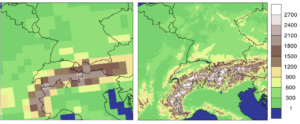Abstract/Description
The archetypes of governance and management of temperate forests are both large-scale and small-scale. In those European countries/regions, such as Galicia −northwestern Spain, where the forests are mostly private and belong to numerous owners, each of them owns a small area, usually divided into several plots, and there is a strict forest legislation. The legislation requires forest management in accordance with principles of sustainable yield, environmental protection and nature conservation. Current management methods use continuous forest inventories, digital cartography, satellite and aerial photographs, remote sensing, stand databases…, as support tools for sustainable forest management and planning. At the national level, most countries with an important forest area carry out regular national forest inventories. The traditional way to assess forest resources in forestry enterprises was to estimate data by using information from stand records covering the whole forest land. Most European temperate forests have been managed according to “classical” sustainable yield principles for a very long time, because these forests differ a lot with respect to ownership, management history and objectives. For this reason, they preserve a unique biodiversity and, in general, the resilience of ecosystem services has been maintained over time. In Central Europe, clear-felling is usually restricted to a few hectares for numerous reasons (e.g., aesthetic, environmental, risks of erosion, etc.). The traditional schools of forest management use a particular type of selective cutting −the “Plenterwald” (selection forestry) system. The archetype of this system is to create, conserve and utilise mixed (often hardwood dominated) forest stands of uneven age, by harvesting single trees as they reach maturity. The Plenterwald system has attracted the attention of environmentalists who perceive it is a very eco-friendly forest management system and, therefore, ecologically better than even-aged forest management, because it is regarded as an aesthetically more acceptable forest management system.


